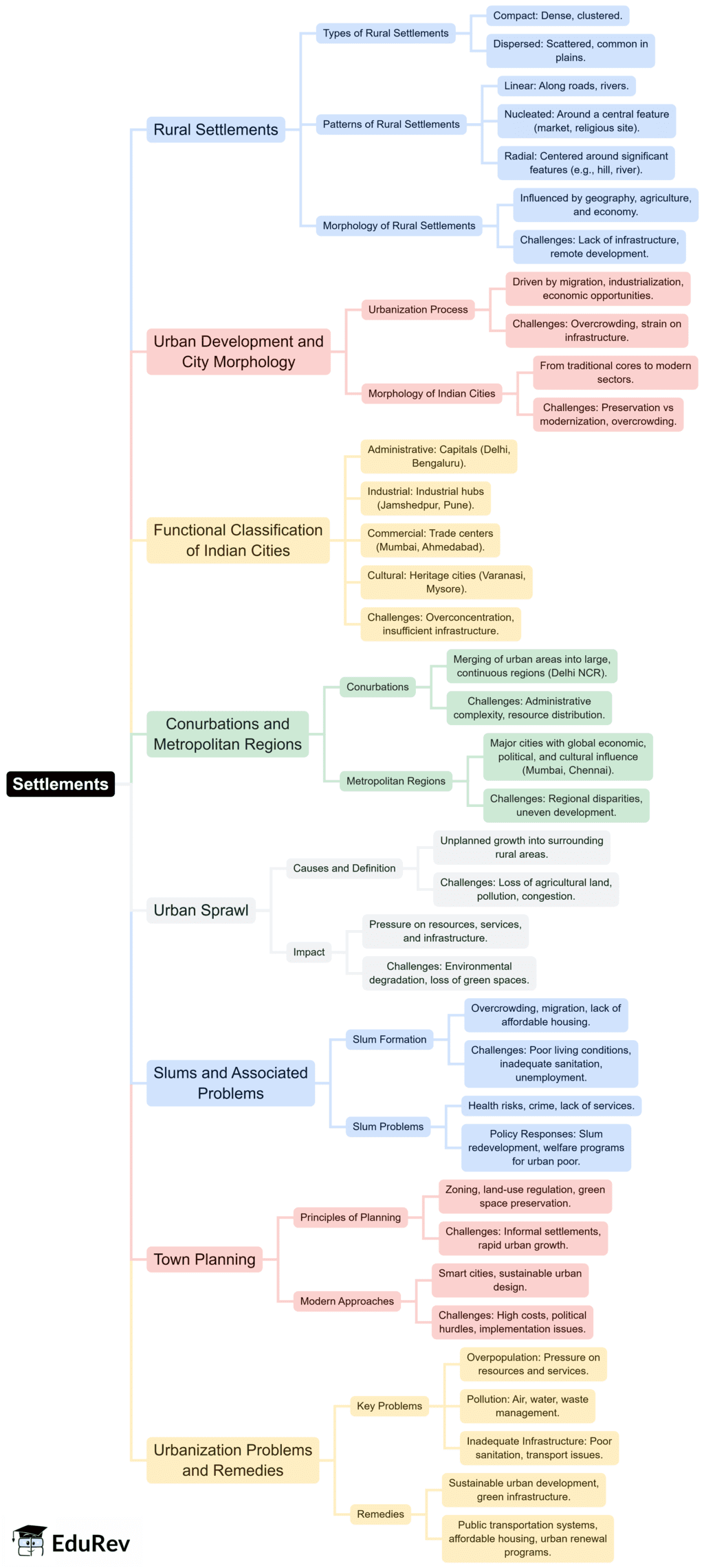UPSC Exam > UPSC Notes > Geography Optional for UPSC > Mind Map: Settlements
Mind Map: Settlements | Geography Optional for UPSC PDF Download

The document Mind Map: Settlements | Geography Optional for UPSC is a part of the UPSC Course Geography Optional for UPSC.
All you need of UPSC at this link: UPSC
|
303 videos|636 docs|252 tests
|
FAQs on Mind Map: Settlements - Geography Optional for UPSC
| 1. What are the main types of settlements recognized in UPSC examinations? |  |
Ans. The main types of settlements recognized in UPSC examinations include rural settlements and urban settlements. Rural settlements are typically characterized by small population sizes, agricultural activities, and limited infrastructure. In contrast, urban settlements are larger, more densely populated areas with diverse economic activities, advanced infrastructure, and social services.
| 2. How do geographical factors influence the location of settlements? |  |
Ans. Geographical factors such as topography, climate, availability of water, and natural resources significantly influence the location of settlements. For instance, settlements are often found near rivers for water supply and fertile land for agriculture. Additionally, areas with favorable climate conditions attract larger populations, while mountainous or arid regions may have sparse settlements.
| 3. What role does culture play in the evolution of settlements? |  |
Ans. Culture plays a crucial role in the evolution of settlements as it influences architectural styles, social structures, and community organization. Cultural practices dictate the types of homes built, the layout of streets, and the presence of communal spaces. Settlements evolve to reflect the beliefs, traditions, and lifestyles of the inhabitants.
| 4. What are the challenges faced by urban settlements in India? |  |
Ans. Urban settlements in India face numerous challenges, including overpopulation, inadequate infrastructure, pollution, traffic congestion, and lack of affordable housing. Additionally, rapid urbanization leads to slums and informal settlements, where basic services like sanitation and clean water are often lacking.
| 5. How does the concept of sustainable development apply to settlements? |  |
Ans. The concept of sustainable development applies to settlements by promoting practices that ensure the long-term viability of urban and rural areas. This includes efficient land use, green building practices, waste management, and the preservation of natural resources. Sustainable settlements prioritize the well-being of current and future generations while minimizing environmental impact.
Related Searches
















